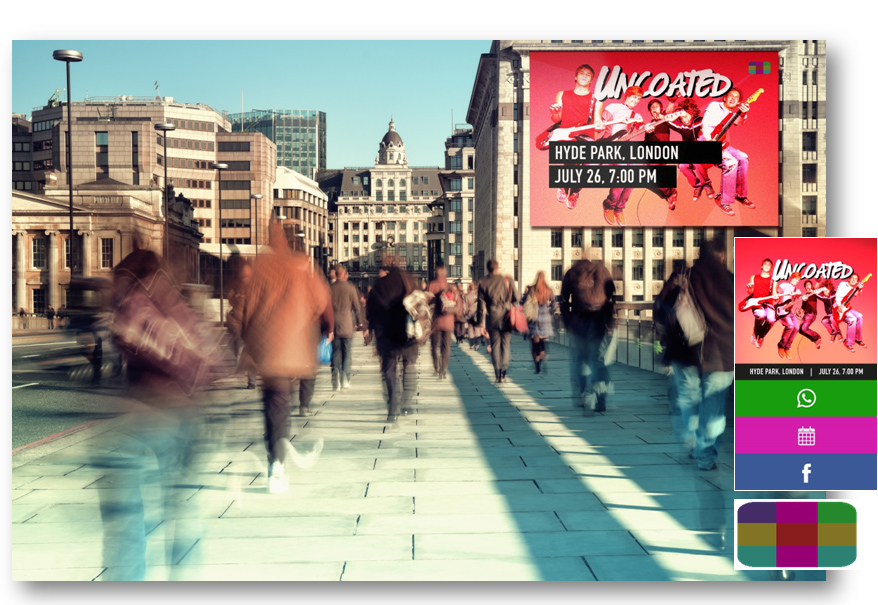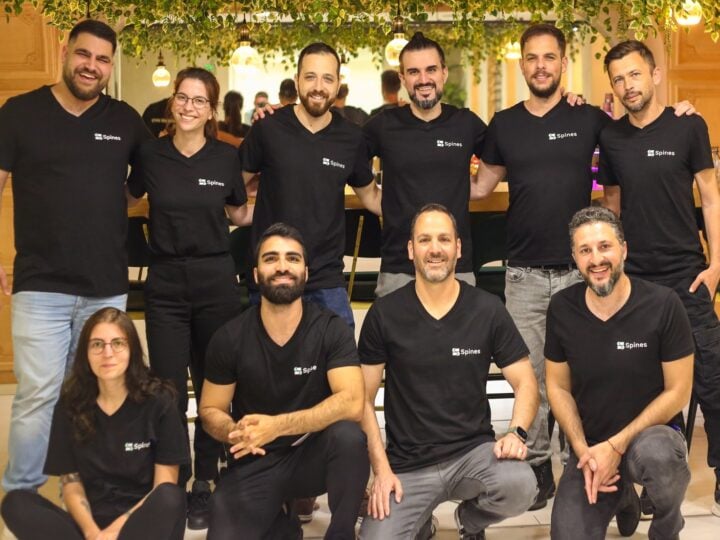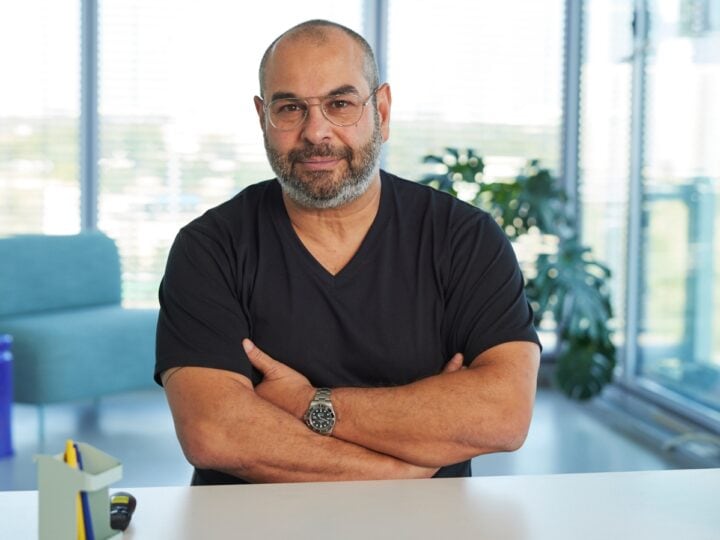No more taking photos of advertisements with phone numbers or websites to look at later. An Israeli company is “magically” turning every commercial into an interactive experience.
The Sodyo ad tag – an Israeli-made technology that looks like a little box of nine colors — is set to disrupt the multi-billion dollar worldwide advertising market with its ability to convert every sign, television commercial, coupon or poster into an interactive advertisement.
“We’re turning the whole world interactive,” Alex Alon, cofounder of Sodyo, tells ISRAEL21c of the company’s offline-to-online (O2O) interaction.
Sodyo’s “magical” abilities are found in its patented Color Vertex Point (CVP) technology — colorful tags that can be printed or digitally displayed on any media.
Advertisements on faraway billboards, street furniture, printed posters, digital screens, in-store media, televisions, computer screens, printed magazines and product packaging featuring a Sodyo tag will come alive the moment a user points any smartphone camera at them.
Think QR codes, but so much better.
“We have known for many years that the camera in a smartphone would not stay as a capture-the-moment feature. We knew it could act as a sensor to interact with the world,” Sodyocofounder and CEOEran Katz tells ISRAEL21c.
The name of the company comes from two Hebrew words: sod (secret) and dyo (ink). “Secret ink. Hidden content that you can reach with your phone,” explains Katz.
The new groundbreaking technology lets smartphone cameras detect the Sodyo color box at distances ranging from 10 centimeters to more than 100 meters. Basically, if you can see the Sodyo-enabled ad, your phone’s camera sensor can detect it, too.
Theadvertiser and consumer interact because the consumer must download the Sodyo iOS orAndroidapp to read ads and an advertiser must feature the Sodyo color box on its advertisement. The tag can be customized to fit any size and shape.
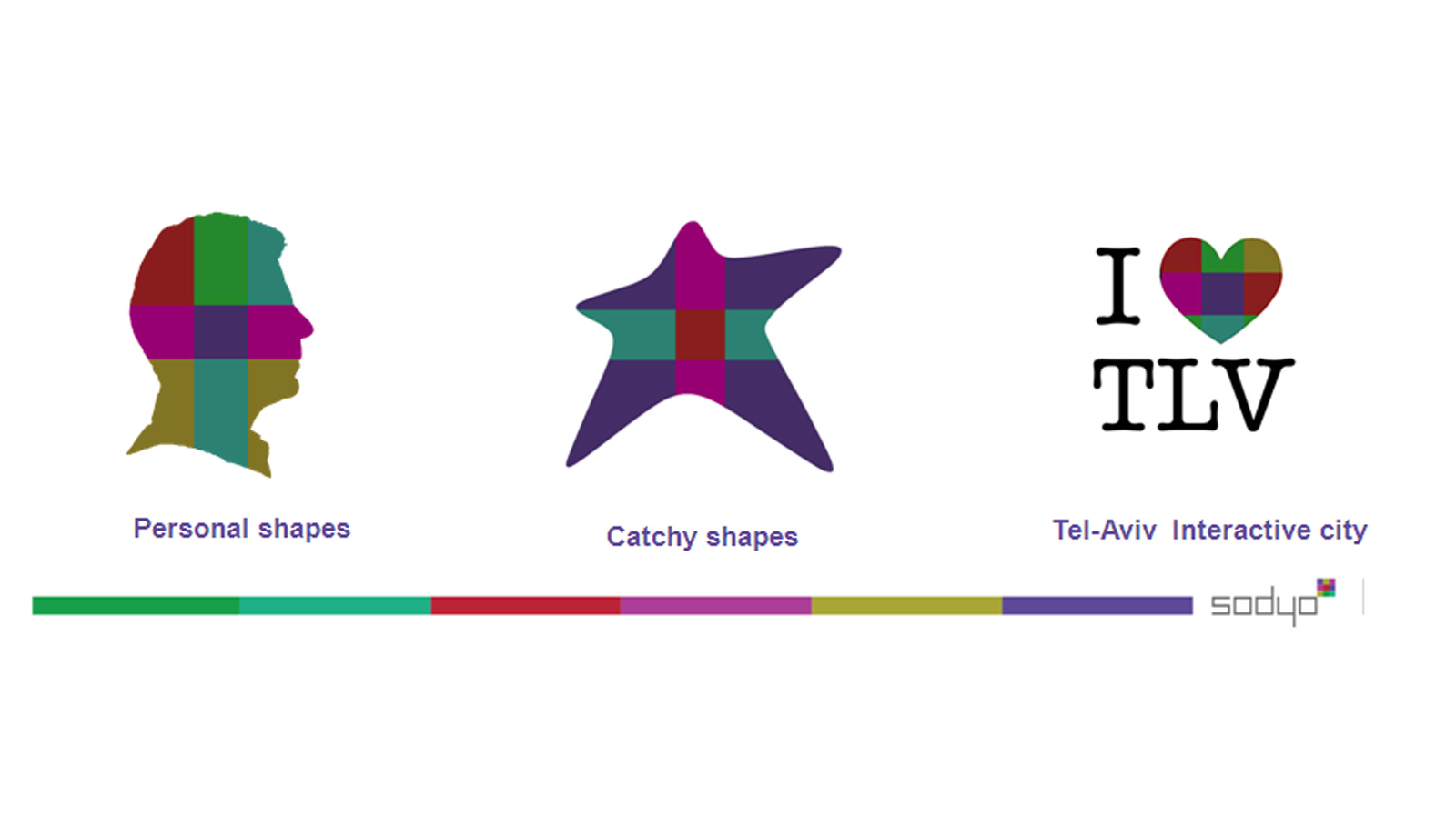
“We need both parties to use our platform. On the one hand, brand advertising will use it to create interactive advertising and the user will be able to use the mobile phone to interact with any kind of advertising,” says Katz.
So, if you’re watching television and want to order concert tickets after seeing a commercial for your favorite band or if you’re reading an ad on the subway and want to call the number you see in the advertisement, just hold up your smartphone, point it at the ad and an interactive version of the advertisement will appear on your screen. You’ll be able to then click on the ad to call a number or click on the advertisement to surf a website.
Foreseeing the future
The Israeli serial entrepreneurs behind Sodyo have been working for over 10 years together. Alon, Katz and their third cofounder and CPO Rina Alon sold their first startup, DBlur Technologies — developer of software for cellphone cameras and other imaging applications – to Tessera Technologies in 2009.
Having already identified the need to explore the sensor abilities of smartphone cameras for new applications, they received R&D grants from the Office of the Chief Scientist to create the groundbreaking and patented CVP technology.
“Invention doesn’t start when the need is obvious. It’s when the need is not obvious that is important,” says Katz.
He and Alon say Israel is a leader in ad-tech and mar-tech thanks to its startup culture of identifying needs and mastering the technology required to meet them even before those needs emerge.
“Living in the startup community in Israel gives you the opportunity to live in the future before it actually happens,” says Alon.
However, the launch of CVP didn’t jump the gun.
Not wanting to flop like the Microsoft Tag — meant to be a colorful alternative to the QR code but shut down after three years — the Sodyo team waited until its technology was fully tweaked and the market was ready.
And the market is ready. Facebook just announced its proprietary visual code. WeChat is using QR codes for joining group chats. Alibaba invested $5 million in the Herzliya-based Visualead for its new visual codes.
“The physical space is merging in front of our eyes. This can already be seen in machine-vision applications that are used by Facebook, Google and others. And tags, like Sodyo’s tags, are needed in order to optimize this linkage,” venture capitalist Ami Dror tells ISRAEL21c. “Due to their structure, Sodyo tags can be embedded into any visual image.”
The team of 10 people based at the trendy Sarona complex in Tel Aviv– including senior vice president for business developmentFred Garroy, former EVSAmericas general manager and COO Gabi Broitman — officially unveiled Sodyo at the 2016 NAB Show in Las Vegas in April.
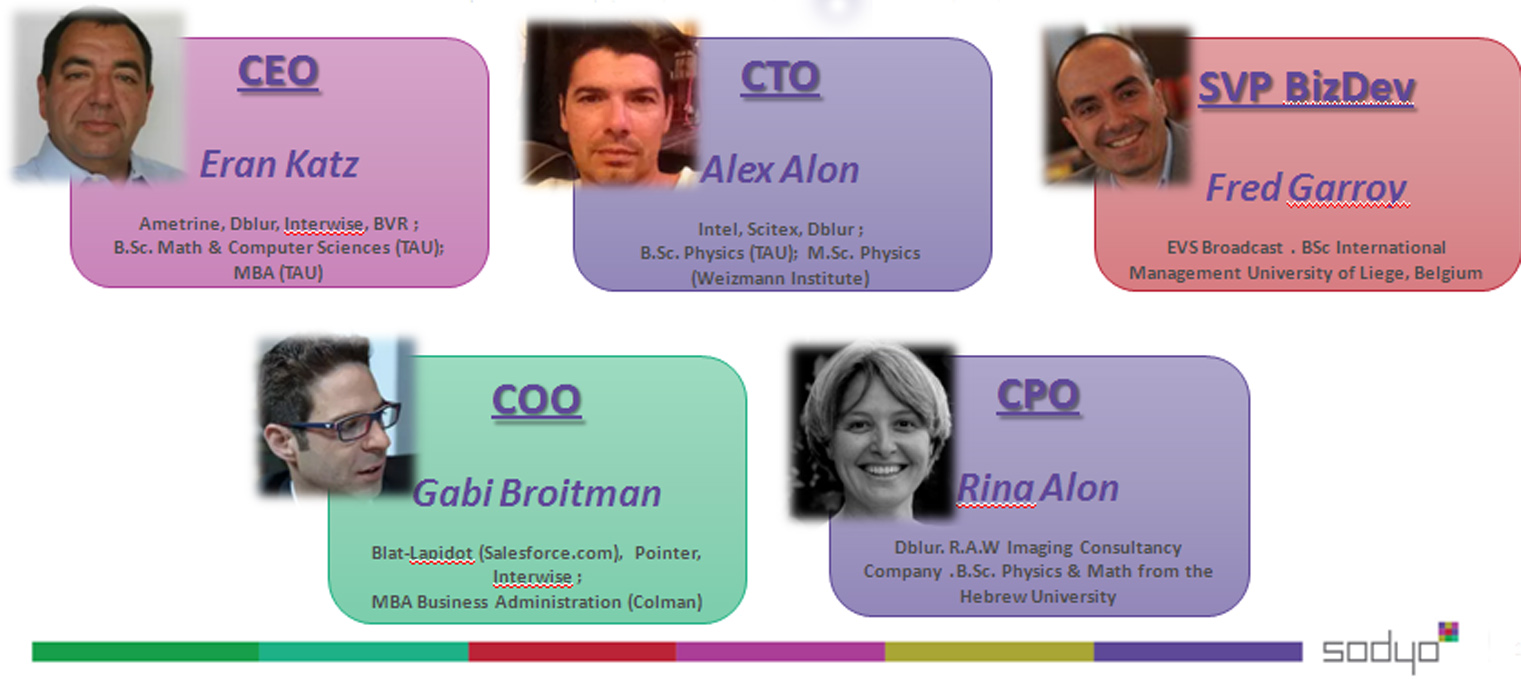
Katz says initial interest was staggering and he expects over 100 million users to be familiar with Sodyo within 12 months.
“The reaction was amazing,” he says. “It’s just a matter of time for people to regularly point their phones at the TV and interact with ads. Your phone will come alive.”
For more information, click here.




